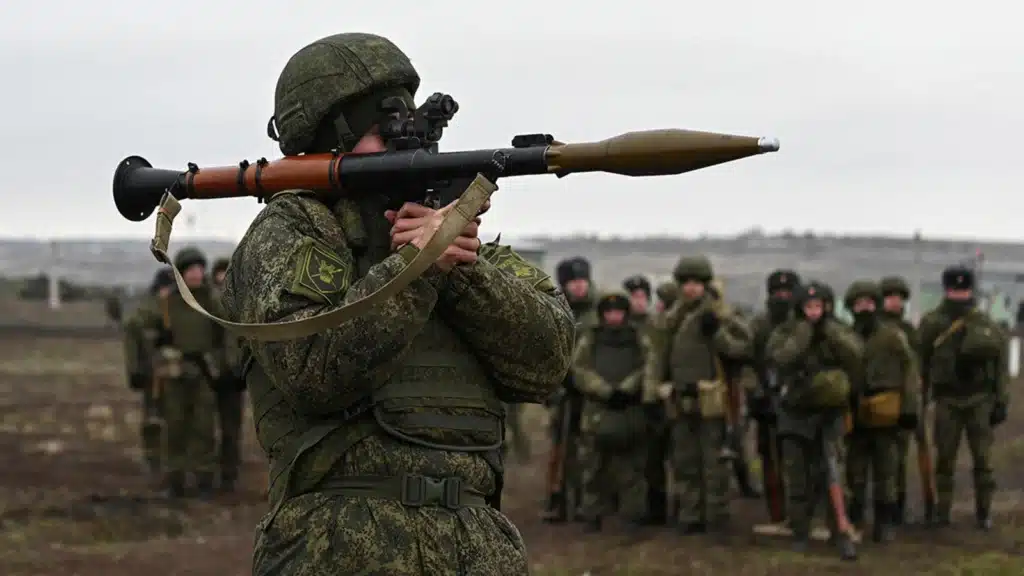Uzbekistan Ranks Third for Foreign Deaths in Russia-Ukraine War

Based on open-source data, the BBC alongside Mediazona and a volunteer team has identified the names of 118,139 Russian military personnel killed during Russia’s full-scale invasion of Ukraine. More than 500 of the deceased were foreign citizens from 28 countries—including Central Asian states.
These figures include only those foreign nationals who had no Russian citizenship when they signed up, and whose deaths could be confirmed via sources such as official announcements, relatives’ posts on social media or gravestone photos. The actual number of foreign recruits killed is expected to be much higher.
When compiling the list, no data was taken from Ukrainian sources or Western intelligence agencies.
Foreign Casualties Reveal Scale of Russia’s Global Recruitment Drive
North Korea is believed to have the highest number of foreign fatalities, though no names could be confirmed due to the secrecy of the regime and lack of social media data. South Korean intelligence estimates around 600 North Korean soldiers died on the front lines. Among named foreign fatalities, citizens from Tajikistan (72) and Uzbekistan (66) lead the list, followed by Georgia (63) and Ukraine (54).
More than half of the dead from Tajikistan and Uzbekistan came from Russian prisons, reportedly signing contracts with the Wagner group to clear their sentences — 43 Tajiks and 46 Uzbeks.
Wagner’s Collapse Shifts Prisoner Recruitment to Russian Military
Since January 2023, recruitment of prisoners has been limited to the Russian Ministry of Defence, reducing Wagner’s role following Yevgeny Prigozhin’s failed mutiny, the formal disbandment of the Wagner Group and Prigozhin’s death in a plane crash. While recruitment continued into 2024, it was on a smaller scale.
Human rights advocates argue that the invasion served as a coercive tool against Central Asian migrants in Russia, forcing them to join the war in exchange for promises such as restored entry rights, citizenship or avoiding deportation. Many were threatened into signing contracts with the Ministry of Defence.
Former Soviet citizens from Georgia—particularly those from South Ossetia and Abkhazia—also feature prominently. Most volunteered, with some having prior military experience before the full-scale invasion.
Nepal, Sri Lanka and the U.S. Among Unexpected Sources of Casualties
Outside the CIS, Nepalese nationals make up the largest foreign contingent, with 70 confirmed dead and around 50 missing. Kathmandu has provided the Russian authorities with DNA samples of relatives for identification.
African countries represented include Ethiopia, Zambia, CAR, Tanzania and Togo. At a Ryazan cemetery, volunteer researchers found graves of four Sri Lankans. Sri Lankan authorities say at least 288 former soldiers enlisted in the Russian army, 16 of whom died.
Among the foreign dead were Americans—including the son of a serving deputy CIA director, Michael Gloss. Gloss lived in Russia from August 2023, signed a contract in September and was killed in April 2024. U.S. intelligence estimates only a handful of Americans serve in the Russian army, compared with 2–3 thousand in Ukrainian units.
The list also includes 54 Ukrainian citizens, registered at the start of the war in Ukrainian-controlled territory, but who fought with Russian forces—most from correctional institutions. Ukrainians from Crimea and other occupied regions serving in Russian formations are not included in this count.
Kursiv also reports that in a symbolic move marking the start of a potential peace process, 30 members of the Kurdistan Workers’ Party (PKK) burned their weapons in northern Iraq on Friday, July 11.

